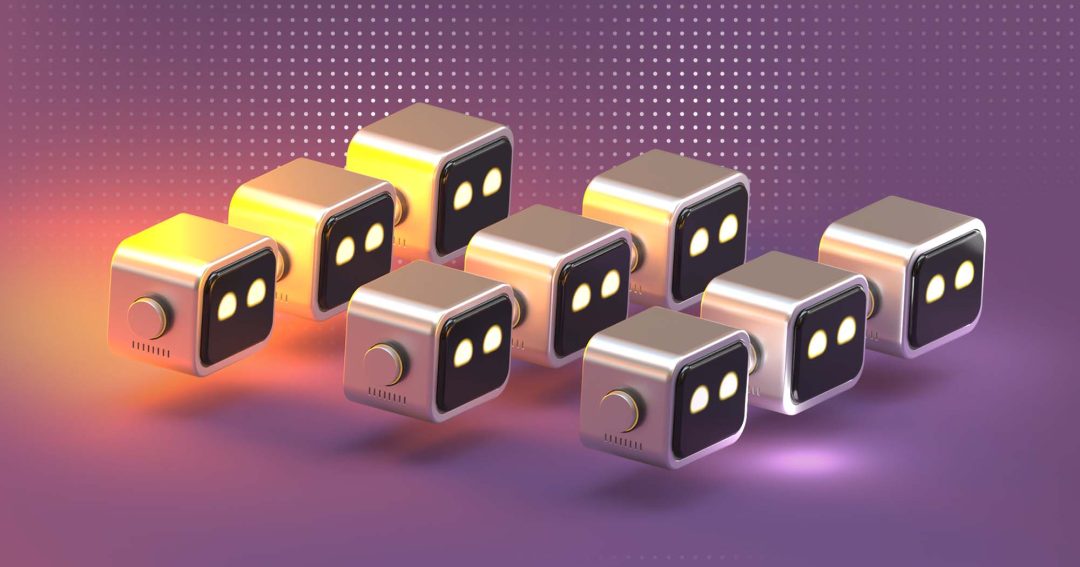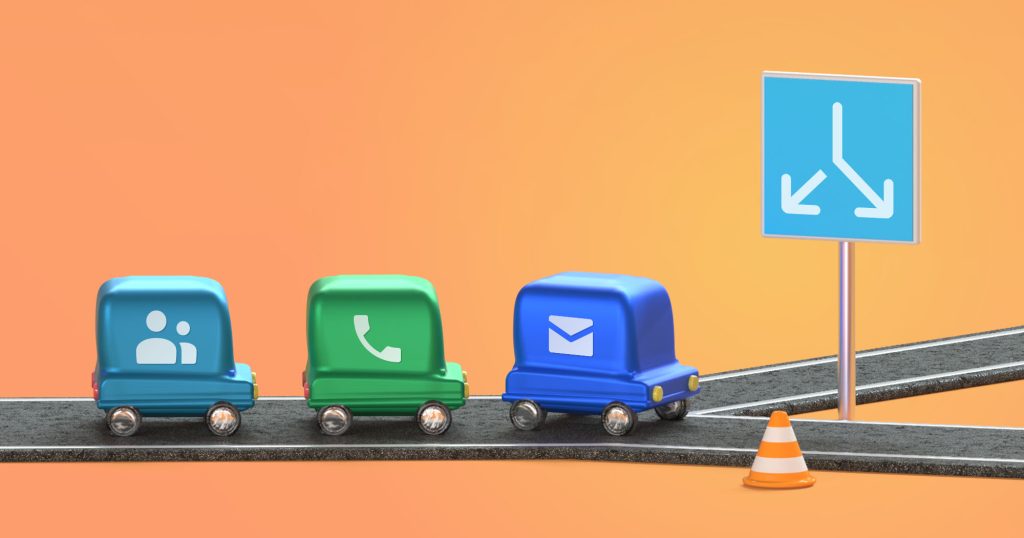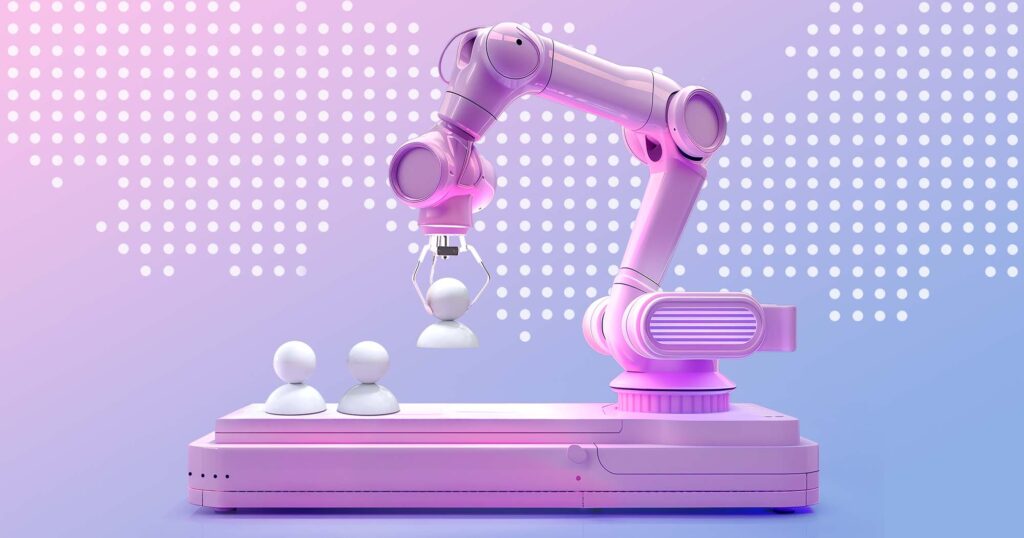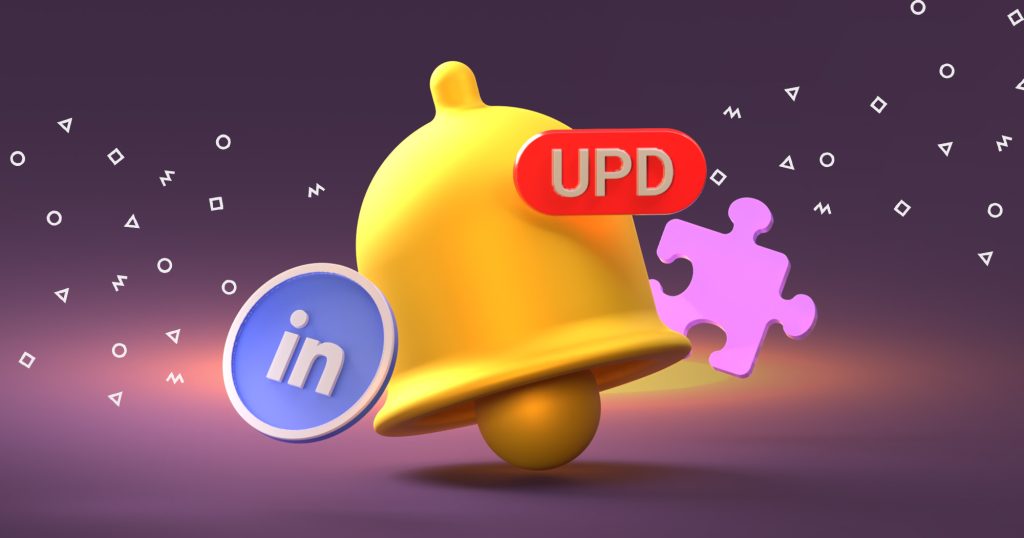Will AI Replace Salespeople? What You Need to Know in 2025
I have to confess, I’m having a major déjà vu these days. You see, back in my previous life I used to be an English language translator before shifting to Tech Sales and moving to Canada.
Back then, about 15 years ago, Google Translate and similar services started getting powerful enough to give me a vague feeling of unease about my prospects on the job market as the technology evolved.
Fast forward to 2025, and after more than a decade in various sales-adjacent roles, not a day now goes by without me seeing another piece of content about AI coming after all kinds of white-collar jobs, with Sales typically being #1 – and this brings me that same uneasy feeling.
To be clear, I don’t blame people falling for these headlines. Quite the opposite – I believe those who are looking for answers today put themselves in a more advantageous position compared to those who are brushing off the notion of AI taking their sales jobs. After all, forewarned is forearmed.
In this article we’ll explore the current state of AI in Sales without the unnecessary fear-mongering or clickbait….
What’s actually happening right now?
As of mid-2025, it’s quite obvious that AI represents one of the most significant technological leaps in human history, often compared to the invention of the Internet or proliferation of personal computers.
The rapid growth of Large Language Models (LLMs) from key players like OpenAI, Anthropic, Google has led to the emergence of purpose-built tools for coding, research, and – of course – sales. These tools are used to automate tasks that were previously considered impossible or impractical to put on autopilot.
Specifically in Sales, we’re seeing the emergence of sales platforms like Jason AI SDR whose purpose is to delegate low-level repetitive sales-related tasks to AI without compromising things that require human involvement. As such, there’s a clear pattern of what such products are good and not (yet) so good at.
What AI does well in Sales today
Almost too predictable, the Sales industry was destined to be one of the first ones to fall ‘victim’ to AI automation and optimization as LLMs grew more and more powerful in the last couple of years.
This is no surprise given how much impact better pattern recognition, data-driven decision making and scaled personalization can have on overall business outcomes, while putting sales reps in charge of high-value human interactions. Here’s a breakdown of where AI is already making a significant impact.
- Basic research and lead generation → compiling actionable data based on filters and publicly available signals, both on a company and individual level;
- Personalization at scale → writing human-like messages that resonate, generating voice and video that utilize such compiled intelligence;
- Communication at scale across various channels;
- Feedback loop analysis → systematically examining call transcripts, email responses, Linkedin behavior etc.;
- Lead scoring and suggesting next best action based on data patterns;
- Connecting leads with human operators when appropriate and reengaging if they go silent;
- Sales assistance → all of the above, but more in a ‘helper’ role, putting you in the driver’s seat where you still have the final say.
Where AI still sucks (for now)
In short, at being human. No matter how hard it is not to humanize LLMs (I’ve recently learned that some people routinely tell ChatGPT about their day), we must remember that AI is just a set of very sophisticated algorithms designed to take text as input, and regurgitate a different kind of text as output. As such, the limitations in the Sales context are:
- It can’t read subtle buying signals – the ones that require interpretation of context, tone, body language and emotional cues that humans still excel at reading;
- It rarely goes beyond top-of-the-funnel sales activities. It can’t proceed to negotiations and stakeholder alignment;
- It can’t build trust and create emotional connection with humans without going into the deception territory;
How are top teams adapting?
According to LinkedIn, more than 75% of B2B sales organizations leverage AI-guided selling in 2025, with more than 56% of sales professionals using AI daily (source). This high level of adoption is a direct proof that the business impact is quite evident and measurable, such as doubling the likelihood of exceeding sales targets.
Most reports indicate that the shift is happening towards optimizing human resources and moving away from 100% human sales organizations to hybrid teams – in other words augmenting customer-facing reps with AI copilots. The keyword that keeps popping up most often is ‘repetitive’. Just like with the conveyor belt in the early 20th century, whatever’s repetitive can and should be automated, with human productivity being shifted towards more complex, non-linear tasks and person-to-person interaction.
It is my firm belief that AI SDRs, and sales automation tools in general, will forever continue to be used with reps, not instead of them. The exact ratio though, will continue to change toward more automation and less humans. Without getting too emotional, let’s look at why.
Imagine you’re a business – a soulless corporation whose only goal is generating more money than was invested in you, while also supporting the livelihoods of people involved in achieving this task. As such, your inclination is to:
- Shorten sales cycles;
- Reduce spend;
- Achieve higher ROI;
- Forecast future more accurately;
This makes it very clear that AI is becoming a foundational component of modern sales departments.
Will some roles change or disappear?
It’s hardly going to come as a surprise to anyone, but some sales roles are already on the chopping block, with more to come:
- Junior sales roles that focused on cold outreach or basic qualification are increasingly automated through AI-powered sales engagement and workflow tools;
- The same goes for inbound lead qualification and research, with the benefit of having proprietary, internal signals of how users behave on your website and what they do in your product – combined with AI’s impeccable execution of when and what to say;
- Traditional sales support roles: lead researchers, manual data entry staff are being phased out as AI handles much of the initial prospecting, list-building, and research with greater speed and accuracy;
- Not yet, but soon – cold callers. I’m SO down for this one, as I would much rather listen to AI connect the dots between my pain points and someone’s solution rather than the incredibly annoying, poorly researched, overly aggressive attempt to book a meeting no matter what, about something I don’t understand.
That said, not all sales roles will disappear. Many will shift and evolve to become even more strategic and valuable. The key here is – again – not to humanize it. The mindset is not “AI vs. me”, but “AI with me”, and those who will adopt it first will get, and stay, ahead.
As AI frees your researchers from repetitive, low-value tasks, it allows them to evolve into more complex problem-solving, creative deal-making and relationship-building professionals.
To give you an example: instead of qualifying and scoring leads or performing repetitive manual research, sales professionals (whatever you want their title to be) are now free to leverage advanced data insights to:
- Orchestrate waterfall lead enrichment – with the likes of Clay, N8N, Zapier and similar;
- Map out entire buying journeys depending on segment, cohort, market etc;
- Shape personalized solutions tailored to customers’ needs;
- Act truly as trusted advisors;
Let’s not sugarcoat this though: adaptation won’t be easy or quick. However, those who do adapt and learn to embrace new technology as a partner rather than a threat will find their newly developed expertise will be in higher demand than ever.
So, what exactly should I be learning right now?
Now we’re getting to the right questions. It’s no longer a matter of “whether I should”, it’s only about “what’s the right learning path for me”, and no, it doesn’t exclusively involve knowing the name of all the sales AI tools out there. Here’s a more structured breakdown.
#1. Foundations – understanding LLMs and their role in Artificial Intelligence. Some of you might already pause thinking “aren’t these the same thing?” While most people do have a high-level idea, it’s always good to have a clear understanding of AI, ML, and LLMs before moving on to more specific topics.
#2. First-party LLM applications from key vendors.
These include ChatGPT from OpenAI, Gemini from Google, Claude from Anthropic, and a few others. For salespeople, the focus should be on:
- Understanding prompting styles – direct questions, instructional prompts, role-playing prompts, etc;
- Prompt engineering – the skill of designing and refining prompts for maximum clarity and context, with different settings like temperature and creativity;
- Understanding the limitations of AI, like hallucinations, bias, lack of real-time context (depends on the LLM and subscription);
Why this is important: even if you’re not planning to use ChatGPT or Gemini in your daily work, most of the sales tools you’ll use – are still doing the same prompting under the hood.
#3. Industry-specific AI-based applications for the Sales industry.
If you’re in Sales, you’re probably already well-versed in a certain type of sales software, be it CRMs, lead generation databases or call recording software. In the context of AI, I recommend focusing on understanding how LLMs and AI in general are transforming the traditional sales software stack and in what ways in particular. Some of the popular categories in B2B sales are listed below, however more often than not you’ll find that lines are quite blurred between where one category ends and the other one begins – keep this in mind.
- Sales engagement platforms (SEPs) with integrated AI enhancements → hyper-personalized content generation and continuous refinement, lead research, dynamic conditional sequencing, automated meeting booking and reengagement (e.g. Reply’s Jason AI SDR);
- Conversation intelligence (CI) platforms → tools that record, transcribe, and analyze sales conversations and through LLMs turn them into powerhouses for advanced summarization, objection handling, sentiment analysis, training and much more;
- AI copilots/assistants → both standalone and integrated tools, designed to be real-time helpers for sales activities like meetings (Microsoft Sales Copilot), sending emails (Lavender), lead research (Clay) and more.
- Lead scoring and predictive analytics platforms → these solutions go beyond traditional, rule-based scoring by using machine learning to uncover lead behavior patterns based on dynamic signals that happen in real time – resulting in less guesswork and better sales. Examples include 6sense, Salesforce Einstein.
The value of being human in an AI world
While efficiency gained by mastering LLMs and AI-based tools is enormous, as we’ve already established, in parts of the sales journey humans can never be replaced, simply because your buyers do not– and will not – want to buy from robots. For instance, try remembering the last time you were excited about talking to an automated customer support over the phone.
So, what can you do?
- Always remember the value of empathy, humor, and storytelling. Whenever appropriate, don’t be afraid to go off-script a little – people are great at reading authenticity, and combined with good domain expertise you have much better chances of success than most of your peers.
- Spend the time you got back thanks to AI gaining as much industry domain expertise as possible – be it Healthcare, Fintech or Property Insurance. Do you feel like you know everything there is to know in your space? Probably not – so now is exactly the right time to start catching up. One of the major effects of AI on the Sales industry is going to be the shift of the human role in it from being a Vendor to being a Strategic Advisor. Help buyers make sense of the noise. Guide them through it. Be part of their success story – not just an annoying email in their inbox.
- Add personal touch to sales messages. Even if you’re using an AI SDR, use its prompt customization tools like Playbooks or AI Variables to tweak any part of the sales sequence to reflect your unique voice, your sense of humor, your personality – don’t be a generic sales pitch.
So… what does the future look like?
Predicting the future of technology is much like timing the stock market: uncertain but consequential. None of us really knows what will happen, just like most of us didn’t know we should be buying Nvidia stocks in 2022.
LLMs and AI in general are currently undergoing a rapid growth phase and the equally scary and exciting part is whether it’ll reach – or exceed – the level of human intelligence at its peak, and if it does, when it’ll happen.
But before then, in my opinio,n it’s reasonable to consider three scenarios for the Sales industry, from most to least plausible in the next 3-5 years:
- AI-augmented sales dominates. Sales support roles continue to decline, but human salespeople remain core, while deeply augmented by AI. The SDR role evolves into orchestrators – think SDR leaders with a team of 0 people, but an army of AI agents.
- Accelerated automation and elimination of entry-level sales jobs. In this scenario most of the SDR/BDR function gets delegated to agents, including the orchestration. This is highly plausible considering that even today there are agents guiding other agents.
- Full disruption of traditional Sales. This is unlikely to happen in 3-5 years but plausible in the long term. Just like Anthropic’s Model Context Protocol (MCP), often referred to as “USB for AI”, is designed to standardize communication between LLMs and third-party products, a similar concept could emerge in B2B relationships where businesses could rely on a standardized protocol of AI communications between their respective buyer and seller units – doing all of the due diligence, evaluation, and negotiation – automatically.
The best salespeople will still be thriving – they’ll just have a much improved toolset to do so.
Final thoughts: Should I lean in or back away?
As it’s hopefully clear to everyone by now that the Sales role is undergoing rapid evolution, the key to staying ahead of the curve is to shift to a systems designer’s mindset:
- How do I build effective systems to find, reach and engage with potential buyers;
- How do I optimize AI outputs to get the best ROI;
- How do I tune Pipeline mechanics to free up time to do what matters most – talking to buyers and closing deals.
This is by no means an easy transition, but there’s never been a better time to get started. How, you ask? Depending on your role, here are a few ideas:
- Take your best performing email sequence or call script and convert it into an AI playbook that will consistently generate a unique, tailored version of it for each and every recipient;
- Compare how the outcomes of your AI-assisted actions compare to a) your own manual actions and b) your peers. Tweak and adjust as needed;
- Get into the habit of constantly calibrating the AI input, by adjusting the tone of voice, reason for outreach, value proposition, personalization aspects etc.;
- If you manage a team, experiment with integrating AI tools into their workflows, share findings in your regular meetings and encourage them to be creative in crafting their AI use cases;
- If you’re in presales – explore tools to automate research tasks, enrich data, qualify and score leads;
- If you’re a closer – use AI to analyze all your recent 100 calls to find areas of improvement. It might hurt a little, but you’ll come out stronger in the end;
Don’t wait for permission – start exploring now. Play with AI tools, ask better questions, watch what works and what doesn’t – but whatever happens, never stop being curious. AI is a tool, not a threat, and those who embrace AI augmentation and lean into their irreplaceably human strengths will thrive.




